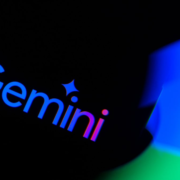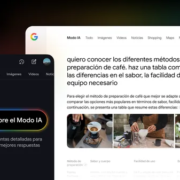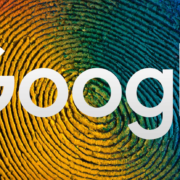How AI Is Reshaping Digital Marketing in 2025 – South Florida Reporter
Artificial intelligence has moved from being a buzzword to becoming the backbone of modern marketing strategies. In 2025, businesses across industries are finding that AI is not just useful, it is essential. From optimizing campaigns to personalizing customer experiences, AI is redefining how digital marketing works.
AI adoption has accelerated rapidly. According to Fantasy AI, 78% of organizations now use AI in at least one business function. This highlights the technology’s shift from experimental to mainstream, with businesses relying on it for everything from analytics to customer engagement.
Georgi Dimitrov, CEO and Founder of Fantasy AI, explains:
“AI is not here to take creativity away from marketers. It is here to amplify it. By combining human insight with AI’s speed and precision, companies can scale personalization, predict trends, and execute campaigns more effectively than ever before.”
Content creation and search engine optimization have been transformed by AI tools. Platforms can now generate outlines, analyze keywords, and suggest improvements in real time. This enables marketers to publish more high-quality content while saving time and resources.
SEO strategies are also becoming more predictive. AI tools can identify new opportunities, spot gaps in competitor strategies, and forecast performance. This allows businesses to be proactive rather than reactive.
Social media campaigns demand constant attention, and AI tools are making them easier to manage. Automated caption generation, optimized posting schedules, and real-time engagement analysis ensure that brands remain consistent.
Personalization is another area where AI excels. By tailoring ads, product recommendations, and emails, companies can build stronger relationships with their audiences. What was once reserved for enterprises with large budgets is now available to small and medium businesses through affordable AI tools.
AI is also changing how paid campaigns are run. Automated bidding, audience segmentation, and creative testing have become standard features in modern ad platforms. This reduces waste and increases return on investment, giving marketers more confidence in their campaigns.
Analytics powered by AI go beyond tracking results. They predict customer behavior, suggest next steps, and uncover hidden opportunities. This empowers businesses to make smarter, data-driven decisions.
AI’s role in digital marketing will only continue to grow. We are likely to see real-time personalization across every customer interaction, smarter automation in advertising, and AI-driven creative tools entering the mainstream.
As Dimitrov points out, “The companies that embrace AI now will not just compete, they will lead. AI is no longer optional for digital marketing, it is the foundation for the next generation of business growth.”
AI is transforming digital marketing in 2025. From SEO to social media, from personalization to predictive analytics, the technology is empowering businesses to reach audiences more effectively.
The message is clear: those who adapt to AI will stay ahead, while those who resist will fall behind. For marketing teams, AI is not the future, it is the present — and the smartest companies are already making it central to their strategy.
Log in to leave a comment
Want daily news updates? Just add your email and you’re on the list. (We will never spam you).
Join Our Newsletter
Sign up to receive news right to your inbox every day
5 ways to get real-time help by going Live with Search
Today, Search Live has officially launched in English in the U.S. — no Labs opt-in required. When you go Live with Search, you can have an interactive voice conversation in AI Mode and share your phone’s camera feed. This means Search can see what your camera sees, respond to your questions in real time and connect you with helpful web links to dive even deeper.
To get started, just open the Google app (Android and iOS) and tap the new Live icon under the search bar. You can start asking your questions out loud and enable video input to share visual context from your camera feed.
Or if you’re already pointing your camera with Google Lens, simply select the new Live option at the bottom of the screen. Camera sharing will be enabled by default, so you can have an instant back-and-forth conversation about whatever you see in front of you.
Ready to try it out? Here are five ways you can use this new capability in Search for fast, real-time help, at home or on the go:
1) Explore while you travel
Imagine you’re on vacation and getting ready at the hotel before a day of exploration. You can go Live with Search to have a hands-free conversation about the neighborhoods you want to visit, all while you finish applying your sunscreen. And once you’re out and about, you can fire up Live and activate your camera to ask about anything you see.
2) Try a new hobby
When you need help picking up a new skill — like crafting the perfect cup of matcha — consider Search Live your very own expert advisor. Point your camera at the equipment in your matcha set and ask what each tool is used for. Or get quick advice on which ingredients you can substitute if you’re looking for low-sugar or dairy-free alternatives for a matcha latte.
The Google Home app is getting a new look. Here’s what’s changing. – Mashable
A sneak peek of Google’s new Google Home app design reveals that Gemini will be front and center as the company transforms its new products with artificial intelligence. Smart House, you will always be famous.
Google Home v3.41.50.3, a forthcoming app update, includes a significant UI overhaul, according to an exclusive by Android Authority. The app will now feature Gemini and Gemini Live (not Google Assistant) front and center, which allows users to fully automate their Google Home settings using the AI assistant. Simply “Ask Home.”
Users will be able to use the new Ask Home search bar to do just that, and can oversee their preferred devices, automations, and environmental feedback on a revived “favorites” page. Google’s also added tiles for expected video and thermometer add-ons. The app comes with fresh icons, cleaner pages, and important privacy disclosures for Gemini Home’s data collection, too — keep your eyes peeled.
Google is set to announce a new line of smart products in October, including a new Nest speaker with built-in Gemini, a new Nest doorbell, and a series of Nest cams for a fully rounded smart home setup. In April, Google announced it would be ending support for first—and second-generation Nest Thermostats, which was explained as a necessary move to focus on supporting newer hardware.
In addition to the hardware upgrades, Google Home users can expect new AI-powered functions and features, such as daily summaries and AI event descriptions, first demoed at the company’s Made by Google event in August.
Topics Google Home
Chase joined Mashable’s Social Good team in 2020, covering online stories about digital activism, climate justice, accessibility, and media representation. Her work also captures how these conversations manifest in politics, popular culture, and fandom. Sometimes she’s very funny.
RS Digital Accelerates AI-Powered SEO Growth Two Months After Official Launch – FinancialContent
Colne, Lancashire – September 24, 2025 – RS Digital, led by founder Gareth Owen, is proud to announce strong momentum following the official launch of its AI SEO agency services in July 2025. In just two months, the Lancashire-based agency has already onboarded a number of forward-thinking clients keen to future-proof their visibility in Google’s new AI-powered Search.
The launch followed a 12-month research and development period, during which RS Digital fine-tuned its AI SEO strategies and tested structured content designed to perform in Google’s Search Generative Experience (SGE).
Why Businesses Are Moving Quickly
With Google now integrating AI-driven results into everyday search, early adopters are securing valuable visibility in generative snippets, answer boxes, and voice search results. RS Digital’s AI SEO service helps businesses adapt to this new environment before competitors gain the upper hand.
RS Digital’s AI SEO Service Includes:
Next Phase of Growth
Since July, RS Digital has already helped clients strengthen their topical authority, lower cost-per-lead, and increase visibility in AI-driven search results. As of September, the agency is expanding its AI SEO rollout with new content frameworks, advanced FAQs, and AI-aligned link building strategies.
About RS Digital
Founded by Gareth Owen, RS Digital is a Lancashire-based digital marketing agency with more than 20 years’ SEO experience. The company specialises in AI SEO, traditional SEO, and PPC strategies, supporting businesses locally and nationally. RS Digital officially launched its AI SEO services in July 2025, following a year of R&D focused on adapting to Google’s AI-powered Search.
Media Contact
Company Name: RS Digital Marketing
Contact Person: Gareth Owen
Email: Send Email
Phone: 01282452096
Address:Standroyd Mill
City: Colne
State: Lancashire
Country: United Kingdom
Website: www.rsdigital.co.uk
Try AI Mode in Spanish today.
AI Mode in Google Search is starting to roll out globally in Spanish today.
This brings our most powerful AI search experience to Spanish speakers around the world. Now, even more people can ask their most complex questions and get a helpful response in AI Mode with links to explore further on the web.
Try out AI Mode at google.com/ai. We look forward to hearing your feedback.
Google On Authentication For SEO Tools & Personal Crawlers – Search Engine Roundtable

Google’s John Mueller posted saying, “Authentication for your personal crawlers & SEO tools is going to be more and more of a topic.” I believe, but I can be wrong, this is alluding to the num parameter being disabled and how tools are having issues now with scraping Google.
He wrote on Bluesky:
Authentication for your personal crawlers & SEO tools is going to be more and more of a topic. This is a simple guide to get started (though I imagine it’ll evolve significantly over time).
The neat thing is that you don’t have to list your IP addresses, and can be verified from where-ever you are (provided you keep the signature). Ideally you’d authenticate on more than just the signature, so that people can’t fake you, but this is early steps.
If you’d like to be involved in the web standards around this, follow datatracker.ietf.org. and the associated mailing list. Your feedback on all of this is welcome there, no need to be an “expert” (whatever that is).
An example of something that’s still uncertain: if you have an AI system in your browser that clicks around and does stuff for you, is that a bot that could (should?) be authenticated? or is that just “you”? (a better / different / assisted “you”?)
I mean, is there a way these third party tools can authenticate themselves so they can go beyond 20 results? I suspect not?
Forum discussion at Bluesky.
Note: This was pre-written and scheduled to be posted today, I am currently offline for Rosh Hashanah.
The content at the Search Engine Roundtable are the sole opinion of the authors and in no way reflect views of RustyBrick ®, Inc
Copyright © 1994-2025 RustyBrick ®, Inc. Web Development All Rights Reserved.
This work by Search Engine Roundtable is licensed under a Creative Commons Attribution 3.0 United States License. Creative Commons License and YouTube videos under YouTube’s ToS.
The Clear Owl: A New AI-Powered Hybrid Platform for Content Marketing – PR Newswire
Searching for your content…
Telephone
+91 22-69790010 from 9 AM – 5:30 PM IST
Contact
+91 22-69790010
from 9 AM – 5:30 PM IST
23 Sep, 2025, 09:00 IST
Share this article
The Clear Owl Combines AI Efficiency with Human Expertise to Deliver Premium Marketing Content at a Fraction of Traditional Agency Costs
BANGALORE, India, Sept. 23, 2025 /PRNewswire/ — Clearly Blue Digital, Bangalore’s well-known content marketing and knowledge services company, has launched a groundbreaking Human-Artificial Intelligence (AI) collaboration platform designed to solve the persistent challenges facing modern marketing teams. The Clear Owl platform uniquely combines automated AI content generation with oversight from professional human content specialists, eliminating the need for complex prompting skills while ensuring quality and accuracy.
Addressing Critical Marketing Pain Points
Talking about the platform, CEO Linda Jacob states that, “With AI now in the mix, the content marketing landscape has become increasingly complex. Marketing teams are struggling to balance the efficiency of AI tools against quality concerns. The Clear Owl addresses these major industry challenges and gives marketers a single-stop solution for their content needs.”
The Clear Owl helps marketing teams overcome:
Premium Content at a Fraction of Agency Costs
The Clear Owl platform introduces several industry-first features:
The platform operates through a simplified Generate-Review-Publish workflow that enables users to get high-quality content within hours.
Exclusive Launch Offer
Following a successful beta program, the powerful AI writing platform ClearOwl.ai, is now available to all users. To celebrate the launch, all early adopters and new subscribers will receive a one-month free trial, along with priority support and special launch pricing. Users can generate up to 5 blog posts during the trial.
Industry Impact
The platform addresses a significant market need, as businesses increasingly seek to leverage AI for content creation while maintaining brand quality and authenticity. Marketing veterans are noting the value add. “What I appreciate most is that the Clear Owl platform reduces my team’s monthly content marketing work from weeks to just hours,” said Michail Chopra, the CEO of global health benefits provider Mayfair We Care. “The team can now use that saved time to focus on talking with prospects and converting leads,” he noted.
Chopra mentioned that the platform also has a clear roadmap to continue to support insurance marketing teams in a hyper-focused manner, something that no other AI platform is currently doing.
About the Company
Clearly Blue Digital is a renowned knowledge services firm based in Bangalore, specializing in branding, marketing, learning, and design. The company has been delivering impactful branding and marketing strategies and solutions to clients across the world.
Media Contact:
Linda Jacob, CEO
ClearOwl.ai, a Clearly Blue Digital platform
Phone: +91 99001 57083
Email: [email protected]
Website: https://clearowl.ai/
Logo: https://mma.prnewswire.com/media/2778479/Clearly_Blue_Digital_Logo.jpg
Do not sell or share my personal information:








